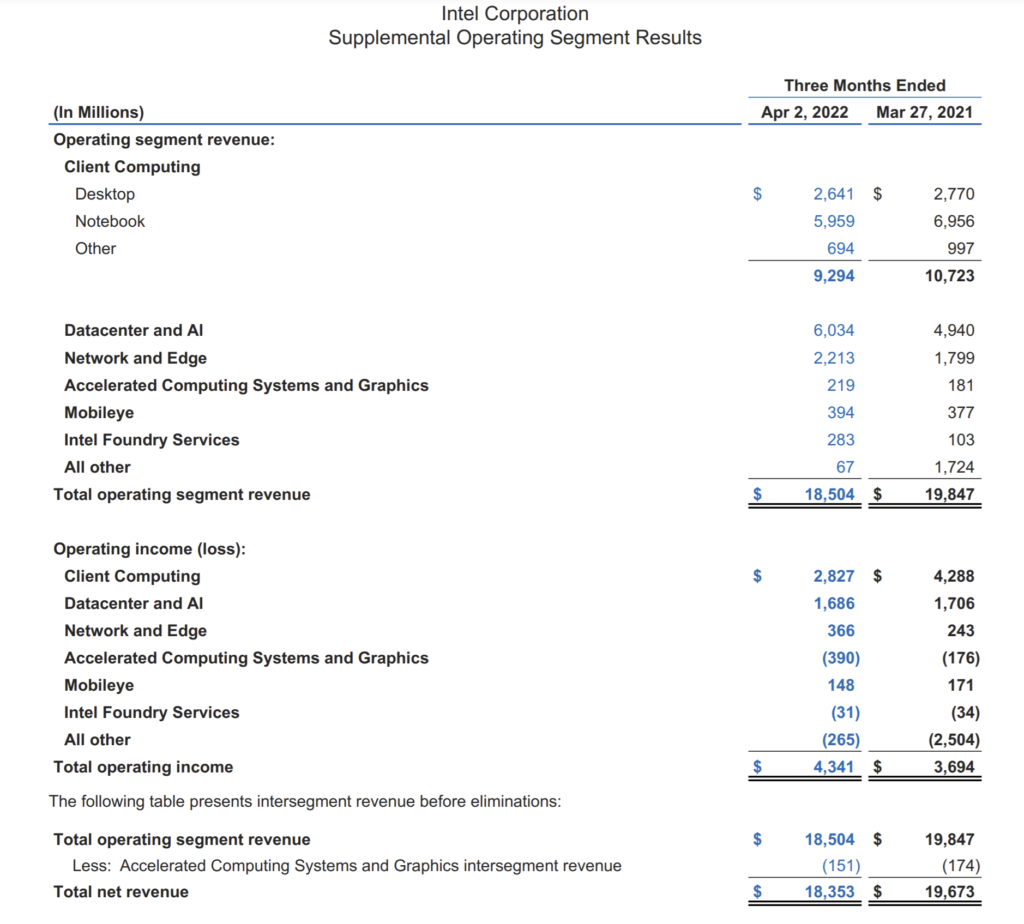Intel’s profits for the first quarter of 2022 have been released, and the company’s top-line statistics narrowly outperformed expectations. The company announced $18.4 billion in non-GAAP revenue for the three months ending December 31, 2021. Only 0.4 per cent of the time, the number exceeded expectations.
Intel’s business sectors have been redesigned, with the addition of IFS, or Intel Foundry Service, a fully vertical, standalone foundry that provides a wide range of chip fabrication services. IFS grew at the fastest rate in Q1 2022, while CCG grew at the slowest rate of -13 per cent. Finally, Intel’s non-GAAP earnings per share (EPS) came in at $0.87, exceeding consensus estimates by 9%.

Intel’s stock is currently down over 4% in after-hours trade after investors responded poorly to the company’s latest earnings report. Intel’s earnings for the first quarter of 2022 come at a time when the business has pulled out of the Russian market in reaction to US sanctions. This element represents a stumbling block to Intel’s top-line growth and profit expansion.
Intel intends to begin shipping CPUs based on its 7nm node in late 2022 or early 2023

Furthermore, the company’s first 7nm-based CPU for data centres is slated to start shipping in H1 2023. Analysts will also be watching Intel’s earnings call for more information on Mobileye’s planned IPO, which is estimated to bring the semiconductor giant a $50 billion bonanza. At a meeting with investors in February 2022, Intel discussed its long-term growth strategy.
The company predicts non-GAAP sales of $76 billion, a non-GAAP gross margin of 52 per cent, and a non-GAAP EPS of $3.50 for the entire fiscal year of 2022. It also expects to spend $27 billion on net capital expenditures this year, with adjusted free cash flow of -$1 billion to -$2 billion.

In terms of Intel’s long-term prospects, the firm anticipates annual revenue growth in the mid-to-high single-digit percentage range in 2023 and 2024. However, by 2026, the business intends to increase yearly growth in its top-line metric to between 10 and 12 per cent, with gross margins rising to between 54 and 58 per cent.
Of course, Intel’s decision to focus on its foundry business is likely to aid in this comeback. Intel is committing at least $20 billion to the construction of a centre in Ohio that may eventually contain up to eight fabs. On a priority basis, the business wants to construct at least two fabs at its Ohio base, with production set to begin in 2025. Intel is also spending an additional $20 billion in Ocotillo, Arizona, to build two new facilities that will service Intel’s customers as well as future foundry partners.
Furthermore, rather than building a large number of complete fabs at a much higher cost, the semiconductor behemoth now plans to build a series of “shells” that can be scaled up to a full-fledged fabrication facility in a relatively short period, depending on market conditions and customer readiness.
also read:








